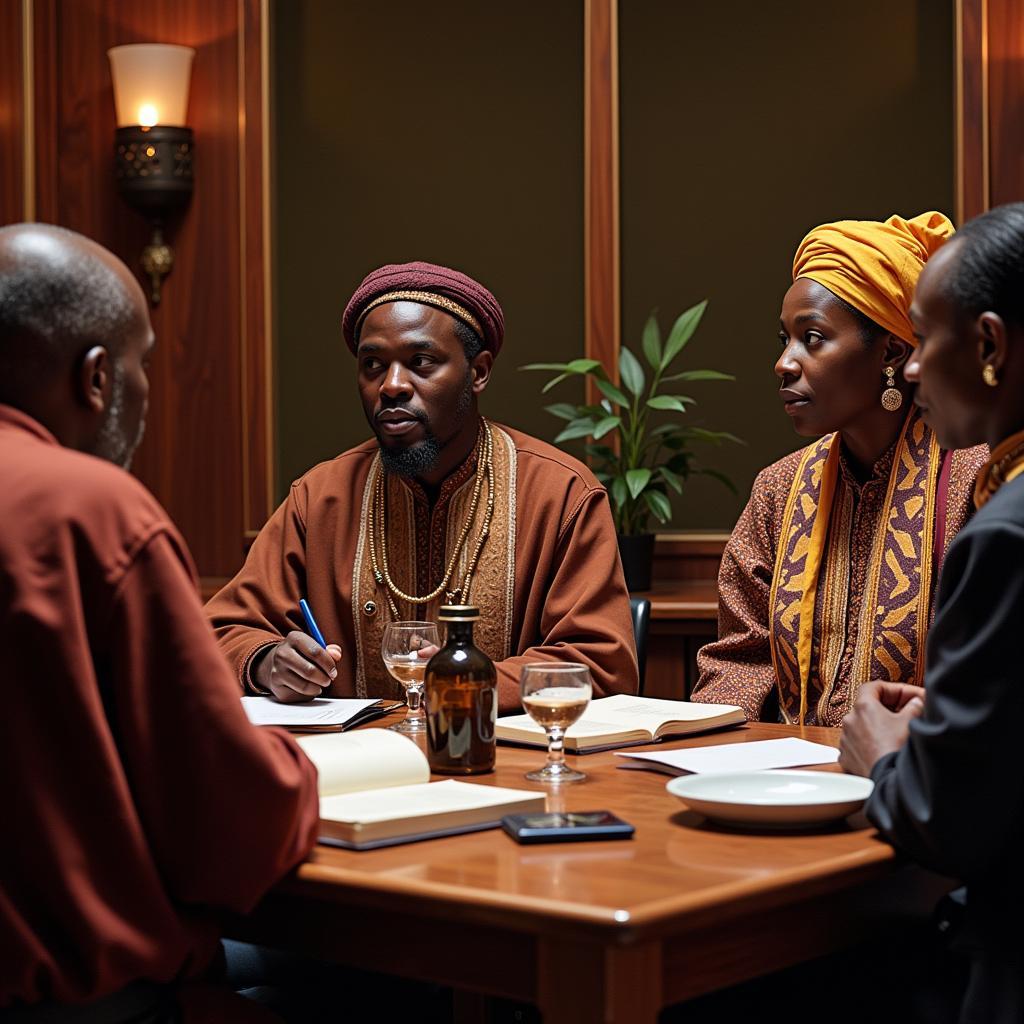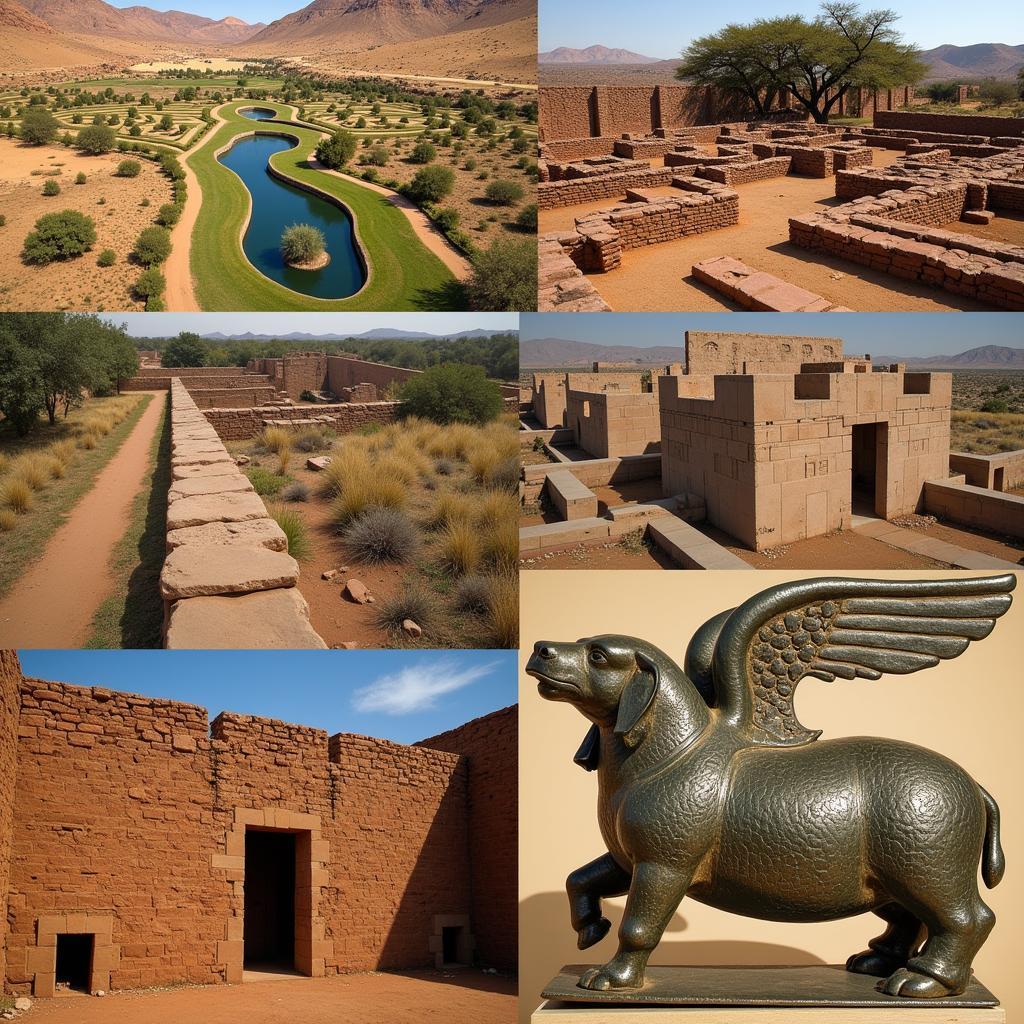The Vibrant World of African Embroidery Patterns: A Journey Through Tradition and Creativity
African Embroidery Patterns are a captivating testament to the rich cultural heritage and artistic prowess of the continent. From the intricate geometric designs of the Maasai to the colorful floral motifs of the Ashanti, these patterns weave stories of history, tradition, and social significance. Embroidered textiles are more than just decorative elements; they are expressions of identity, symbols of status, and powerful visual narratives that connect generations.
Delving into the History and Significance of African Embroidery Patterns
The origins of African embroidery patterns can be traced back centuries, with each region and ethnic group developing its own unique style and symbolism. These patterns often depict animals, plants, and spiritual symbols that hold deep cultural significance. For instance, the Maasai of East Africa use geometric shapes like triangles and squares to represent their social structure and kinship ties. The Ashanti of Ghana, known for their elaborate gold ornaments, incorporate intricate floral patterns into their embroidery, symbolizing prosperity and fertility.
Understanding the Techniques and Materials Used in African Embroidery
African embroidery techniques are as diverse as the cultures themselves. Some regions utilize traditional methods like hand-stitching with needles and thread made from natural fibers like cotton, silk, and wool. Others have adopted more modern techniques using sewing machines and synthetic fabrics. Despite the variations in methods, the artistic principles remain consistent: meticulous craftsmanship, vibrant color palettes, and symbolic imagery.
Common Elements in African Embroidery Patterns:
- Geometric Motifs: Triangles, squares, circles, and zigzags are prevalent in many African embroidery patterns, representing unity, harmony, and the interconnectedness of life.
- Animal Representations: Animals like lions, elephants, birds, and snakes hold symbolic significance in various cultures. These patterns often represent power, strength, wisdom, or spiritual guidance.
- Floral Patterns: Floral motifs, particularly those with intricate details, are often linked to fertility, growth, and beauty.
- Spiritual and Religious Symbols: Embroidery patterns can also depict spiritual symbols like deities, ancestors, and religious beliefs, serving as a visual representation of faith and cultural identity.
Exploring the Diverse Embroidery Traditions Across Africa
1. The Maasai of East Africa:
“The Maasai embroidery patterns are like a visual language, expressing their worldview and social structures.” – Aisha Mwangi, Textile Historian
The Maasai are known for their striking geometric designs, often using red, blue, and black colors. These patterns adorn their clothing, beaded jewelry, and ceremonial items. The intricate designs convey messages of kinship, age, and social standing.
Shortcode-1: maasai-embroidery-patterns|Maasai Embroidery Patterns| This image showcases the intricate geometric designs of Maasai embroidery, featuring vibrant colors and a focus on triangles and squares. The patterns are often incorporated into their clothing, beaded jewelry, and ceremonial items, reflecting their social structures and cultural values.
2. The Ashanti of Ghana:
“The Ashanti embroidery patterns are a testament to their mastery of textiles, blending traditional motifs with intricate floral designs.” – Kwame Agyemang, Textile Artist
The Ashanti are renowned for their exquisite gold jewelry and weaving skills. Their embroidery patterns often incorporate intricate floral designs, symbolizing prosperity and fertility. These patterns are found on their clothing, bags, and other decorative items.
Shortcode-2: ashanti-embroidery-patterns|Ashanti Embroidery Patterns|This image illustrates the elaborate floral patterns characteristic of Ashanti embroidery. The designs often incorporate intricate details and vibrant colors, symbolizing prosperity, fertility, and the rich cultural heritage of the Ashanti people.
3. The Yoruba of Nigeria:
“The Yoruba embroidery patterns are a rich tapestry of cultural symbolism, reflecting their belief systems and artistic expressions.” – Adewale Folarin, Textile Historian
The Yoruba people have a long and distinguished history of textile arts. Their embroidery patterns often incorporate complex geometric designs, animal representations, and spiritual symbols. These designs are found on their clothing, ceremonial items, and wall hangings.
Shortcode-3: yoruba-embroidery-patterns|Yoruba Embroidery Patterns|This image showcases the intricate geometric designs and symbolic representations found in Yoruba embroidery. The patterns often feature animal motifs, spiritual symbols, and complex geometric shapes, reflecting the rich cultural heritage and belief systems of the Yoruba people.
African Embroidery Patterns: A Source of Inspiration for Contemporary Design
African embroidery patterns continue to inspire contemporary designers across various fields. Fashion designers incorporate these motifs into their clothing lines, adding a touch of cultural vibrancy and unique aesthetics. Interior designers utilize these patterns in textiles, wallpaper, and furniture to create spaces with a rich cultural and artistic flavor.
Conclusion
African embroidery patterns are a treasure trove of cultural expression, weaving stories of history, tradition, and artistry. These patterns are not merely decorative elements; they are visual narratives that connect generations and serve as a source of inspiration for contemporary design. As we explore the vibrant world of African embroidery patterns, we gain a deeper appreciation for the rich cultural heritage and artistic ingenuity of the continent.




